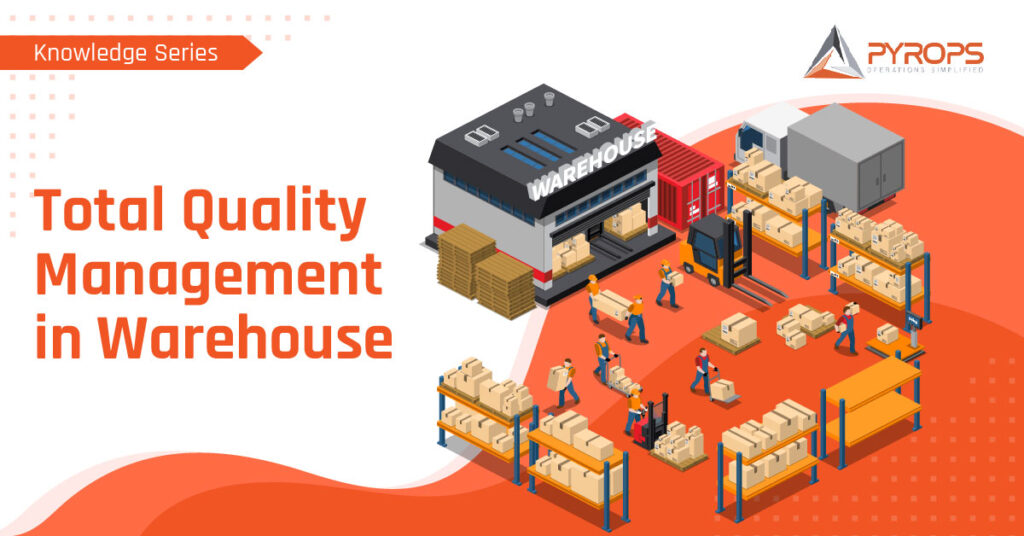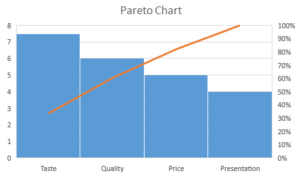
Quality Control In Warehouse
Quality control in warehouses is important to the success of an organization and its business. Focusing on the quality of each order, monitoring and adjusting protocols and processes based on key metrics for the proper packing and shipping of each order can improve the efficiency of operations. Keeping tabs on metrics such as how long it takes to pick, safely package, and correctly fill an order, to then load it properly before it ships out are all fundamental to improving product quality.
What Is Quality Control In A Warehouse?
In the dynamic world of warehouse operations, a warehouse quality checker plays a pivotal role in maintaining efficiency, minimizing errors, and safeguarding customer satisfaction. Warehouse quality control encompasses a comprehensive set of practices aimed at monitoring and evaluating the quality of warehouse operations and ensuring that all work adheres to established standards.
Effective QC in warehouses extends beyond the confines of the warehouse walls, encompassing the entire process of receiving and dispatching goods. This includes meticulously inspecting incoming shipments to ensure that products meet the specified quality standards before they are stored or distributed. This level of vigilance helps protect your reputation and ensures that your customers, or your customers’ consumers if you are a third-party logistics (3PL) warehouse, receive only the highest quality goods.
Quality control in warehouse management extends far beyond mere product inspection; it encompasses a holistic approach to optimizing warehouse operations and minimizing inefficiencies. By implementing rigorous quality control measures, businesses can identify and address potential bottlenecks, streamline processes, and reduce the likelihood of errors. This, in turn, leads to improved efficiency, reduced costs, and enhanced customer satisfaction.
Importance of Quality Control In warehouse
Quality in the warehouse operations is of paramount importance for ensuring that products are stored, handled, and shipped in a manner that maintains their quality and integrity. It plays a crucial role in safeguarding customer satisfaction, minimizing errors and losses, and optimizing warehouse operations.
Enhancing Customer Satisfaction
Effective quality control in warehouse management measures directly contributes to customer satisfaction by ensuring that products reach customers in a timely, undamaged, and defect-free condition. This, in turn, fosters customer loyalty, reduces the likelihood of returns and complaints, and enhances the overall perception of the brand.
Minimizing Errors and Losses
QC in the warehouse helps prevent costly errors and losses that can arise from damaged goods, incorrect shipments, or mishandling of products. By implementing rigorous quality control procedures, businesses can identify and address potential issues early on, reducing the risk of financial losses and reputational damage.
Optimizing Warehouse Operations
Warehouse quality management promotes efficiency and consistency within warehouse operations. By establishing clear quality standards and implementing effective control measures, businesses can streamline processes, reduce rework, and minimize downtime. This, in turn, leads to cost savings, improved productivity, and enhanced overall warehouse performance.
Keeping tabs on metrics such as how long it takes to pick, safely package, and correctly fill an order, to then load it properly before it ships out are all fundamental to improving product quality.
Total Quality Management (TQM)
Total Quality Management (TQM) is a manufacturing philosophy, which focuses on improving quality across the operations, and producing higher quality products with few defects. Total quality management is a structured approach to overall organizational management. The focus of the process is to improve the quality of an organization’s outputs, including goods and services, through the continual improvement of internal practices.
Total warehouse quality assurance extends beyond mere product inspection; it permeates every stage of the warehouse process. It involves establishing clear quality standards, implementing rigorous quality control measures, and empowering employees to take ownership of quality improvement initiatives. This comprehensive approach ensures that quality remains at the forefront of warehouse operations, minimizing errors, reducing costs, and ultimately enhancing customer satisfaction.
The standards set as part of the TQM approach can reflect both internal priorities and any industry standards currently in place. Industry standards are defined at multiple levels and may include adherence to various laws and regulations governing the operation of a particular business. Industry standards can also include the production of items to an understood norm, even if the norm is not backed by official regulations.
Principles of TQM
Customer Focus
- Organizations must strive to understand their customers’ current and future needs, and work towards exceeding their expectations by continually improving the quality, processes, etc.
- It results in increased customer loyalty, revenue, and reduced waste
Leadership
- A business without strong and clear leadership is often directionless and failure prone
- An organization must have strong leadership and clearly defined objectives, and its employees must actively work towards achieving those targets
- This results in better employee engagement, and participate in working towards common goals.
Employee involvement
- Involvement of all the employees of an organization is essential in the development of quality products or services
- This ensures increased motivation and accountability amongst the employees, and paves way for innovation in products as well as services
Process-centric approach
- Organizations must develop processes in accordance with their vision, mission, and strategies to drive efficiency and effectiveness, and eventually productivity
- Such processes, speed-up the overall organizational work, reduce cost, promote continuous improvement, and help deliver quality to the customers
Strategic and systematic approach
- Organizations must focus on managing the key processes and the aligning processes together as a system to drive greater efficiency
- It is essential to ensure that quality becomes the core aspect of all business processes
Continous improvement
- Continous improvement is a mantra that ensures organizations find new ways and techniques to produce better quality products, improve processes, be more competitive, and exceed the customer expectations
- Continuous improvement should hence an active business objective, especially to develop the ability to embrace new opportunities and adapt to new market conditions
Data centric approach
- Often organizations take impulsive decisions in the lack of meaningful data
- TQM ensures organizations collect and analyze data on a continual basis so as to improve quality, introduce fact-based & accurate decision making, forecasts based on past history, and achieve consensus
Mutually beneficial supplier relations
- This principle recognizes that an organization and its suppliers are independent, and a strong mutually beneficial relationship between the two enhances productivity and the ability to create value
- The result is optimization of costs and resources, seamless work practices, and commitment towards delivering customer satisfaction
How to improve Quality in a Warehouse?
Supply chains are networks that require fast and clear communication about accurate information on supply and demand. Implementing effective quality control (QC) in warehouse management can save the facility money by identifying and reducing wasted orders, time, energy, and materials. Here are ways to improve quality in warehouse operations which will make operations more competitive and favorable to stakeholders involved.
Inspect individual orders
- To ensure order fulfillment is high, it is important for warehouse managers to assign quality control in warehouse duties to
- Cognizance of the importance of hiring the right pickers and establishing warehouse best practices is necessary
- The goal of reducing wasted inaccurate orders is a big part of achieving warehouse efficiency
- The more orders manually inspected by sharp quality control experts, the more possibility to identify the root of the problem that is causing inaccurate orders to flow through the system
- The more accurate order fulfillment becomes, the more returns can be reduced and customer satisfaction can be improved.
Invest in streamlining technology
- One of the most effective ways to improve warehouse and customer satisfaction is to invest in state-of-the-art warehouse management software
- Not only will it improve order accuracy, it allows documenting problems easily, allowing to move items such as defective products to specific locations
- Warehouse team will be able to locate products quickly with barcode scanners that connect with infrastructure
- Communication with the distribution center will be more seamless, as inventory management will be more simplified
Track daily progress
- Another excellent reason for a digital warehouse management system is to track operational performance on a daily basis
- Analyzing performance data will allow to detect inefficiencies that need to be addressed immediately
- It will indicate which team members are the most productive and do assignments in a timely manner with precision
- It will also allow analyzing the shipping and receiving process, as well as improve storage strategies
Make quality control a high priority
- The best way to improve product distribution and inventory management is to make quality control an important aspect of business
- When quality control is made a top priority, teams will move toward an error-free operation, especially if using AI software and automation
- The result will be a stronger record of accomplishment for on-time delivery and receiving, accurate documentation, and compliance with rules for loading and marking causing fewer customer complaints and a better chance of boosting profit margins
Tighten up quality controls
- The first step to improving quality control is to understand why it exists, which is to limit errors such as wrong orders or defective products
- Failure to see this last line of defense as critical is how a brand can swiftly alienate its customers and fall behind competitors
Comparing Fulfillment Models: Dark Store vs. E-commerce
Tools to control Quality check process in warehouse
Warehouse quality checker benefits a warehouse in that it should successfully catch issues early on and limit any future mistakes. This can help tighten up inefficient processes or aid in diagnosing a specific problem and improve warehouse efficiency. Seven warehouse quality checker tools that help organizations troubleshoot errors are illustrated below
Cause & Effect Daigram

- A cause-and-effect diagram (also referred to as the Ishikawa or a fishbone diagram) shows the potential causes of a specific issue
- To create a cause-and-effect diagram, a warehouse manager brainstorms with his team to come up with a list of every possible reason for an error
- For example, the warehouse team may be consistently forgetting to include packing slips
- Everyone works together to disqualify the less likely causes and identify the most probable reason
- Then they develop a solution to prevent the problem from recurring
Check Sheet

- Warehouse employees can use check sheets to mark off daily tasks, count inventory, or (as in the example below) record the days on which issue occurred
- The increase in responsibility on the part of workers is beneficial to encouraging workers to check their work
- Managers can use check sheets to identify patterns and make more informed decisions about how to run the warehouse
Flow Chart

- Flowchart (sometimes called stratification or run chart) illustrates each separate step in a workflow
- Using a workflow can assist in determining which part of the workflow requires more scrutiny
Histogram

- A control chart is a more sophisticated flowchart that shows how a workflow changes over time
- It includes a line for the average, a line for the upper control limit (UCL), and a line for the lower control limit (LCL)
- By comparing data on the current shipping workflow to these lines, warehouse managers can differentiate between normal fluctuations and unexpected spikes
Pareto Chart

- The errors are listed in descending order of frequency, and the line represents the cumulative frequency
- Warehouse managers can use a Pareto chart to identify the most significant problem(s) and prioritize fixing those first
- This prevents the warehouse team from resolving issues that won’t be as impactful
Scatter Diagram
- A scatter diagram helps illustrate the relationship between two variables
- It can determined how intense two factors correlate or if they share a positive or negative relationship
- This allows managers to know whether to further investigate the variables or look for something more relevant
- For example, warehouse managers can use it to identify the relationship between the number daily orders and the number of errors
5S in warehouse
The 5S is a lean strategy that helps to achieve warehouse objective i.e. to solve the problems. Getting a warehouse that is clean, organized, and much more than looking fantastic. It is all about making warehousing operations most effective; excel in training and communications, and eventually saving money and time. A facility that has introduced 5S can rapidly detect or surface problems or address the causes and fix the brief-term challenges to avoid recurrence. Let us look the 5S steps for implementing 5S in the Warehouse.
Sort- Seiri
- Workers sort everything in a workspace into what is and what is not needed
- Some use a system called “red tagging” in which every item not necessary for a process gets red-tagged during the sort phase
- These items are set aside and evaluated later. Workers store seldom used items nearby, but not at the workstation
- They discard unsafe items and clutter
Set in Order- Seiton
- It makes sure all items get ordered, and each object has a specified position
- Organize all the things remaining in the workspace in a structured manner to promote the execution of job assignments for the worker
Shine- Seiso
- The active attempts to be safe and tidy in work environments ensure purpose-oriented work assignments for the worker
Standardize- Seike
- Establish a set of norms for both organization and processes
- Mostly, this is when the first three S’s are considered or guidelines made as to whether and when certain activities should be carried out
Sustain- Shitsuke
- Supporting innovative policies and performing internal audits
- Conduct regular evaluation or even surprise inspections to make sure workers are following the new standards
- The focus is on applying the laws and integrating them into the company’s work so that they become habits
Elevate Warehouse Quality Assurance
Pyrops WMS is committed to providing comprehensive warehouse management solutions (WMS) tailored to your specific quality control needs. Our team of experienced professionals will collaborate closely with you to assess your requirements, develop customized quality control procedures, and provide ongoing support to ensure the success of your quality improvement initiatives.
Contact us today and discover how Pyrops WMS solutions can help you elevate your warehouse operations to new heights of efficiency and customer satisfaction.

|
|
Thank you for Signing Up |









